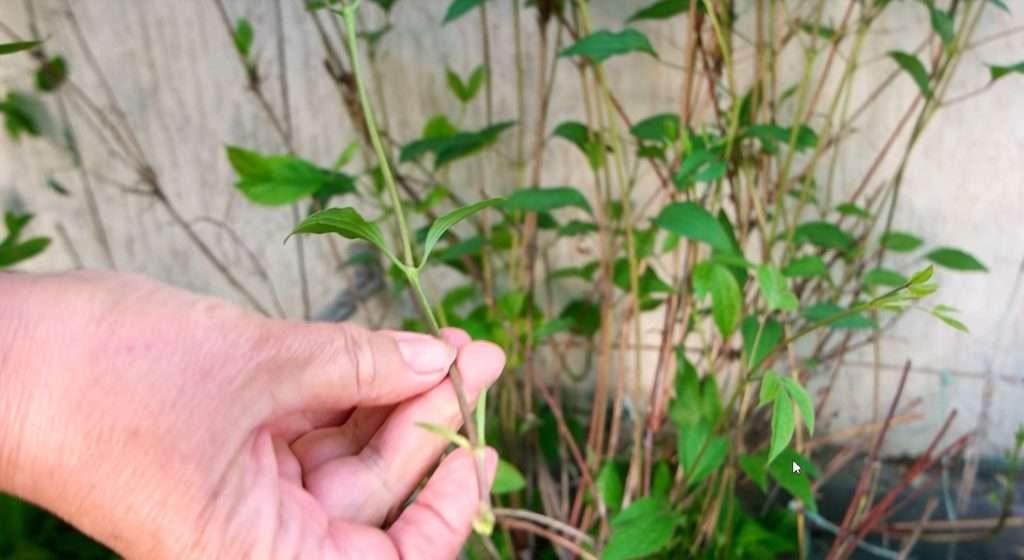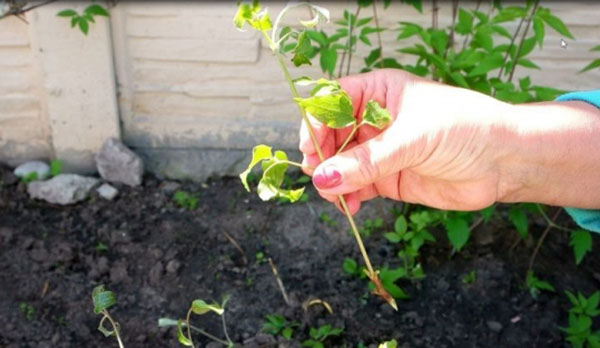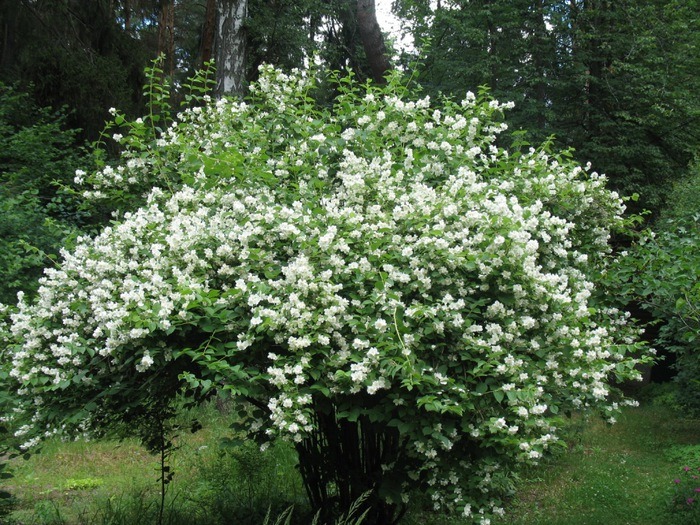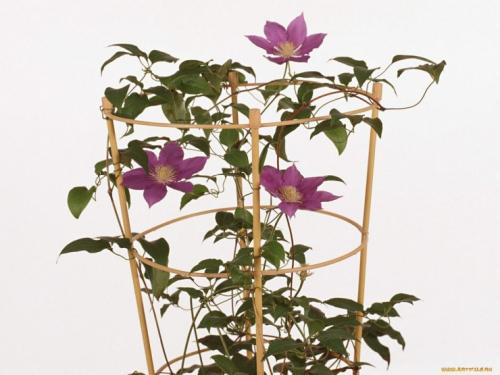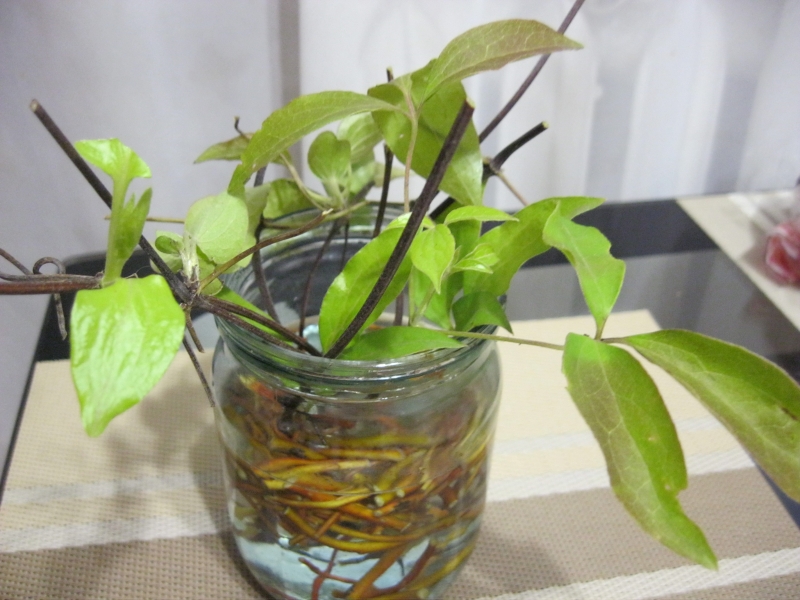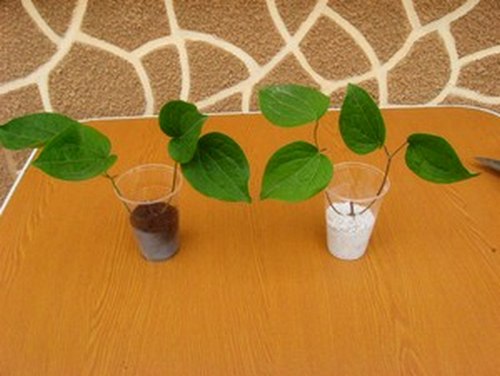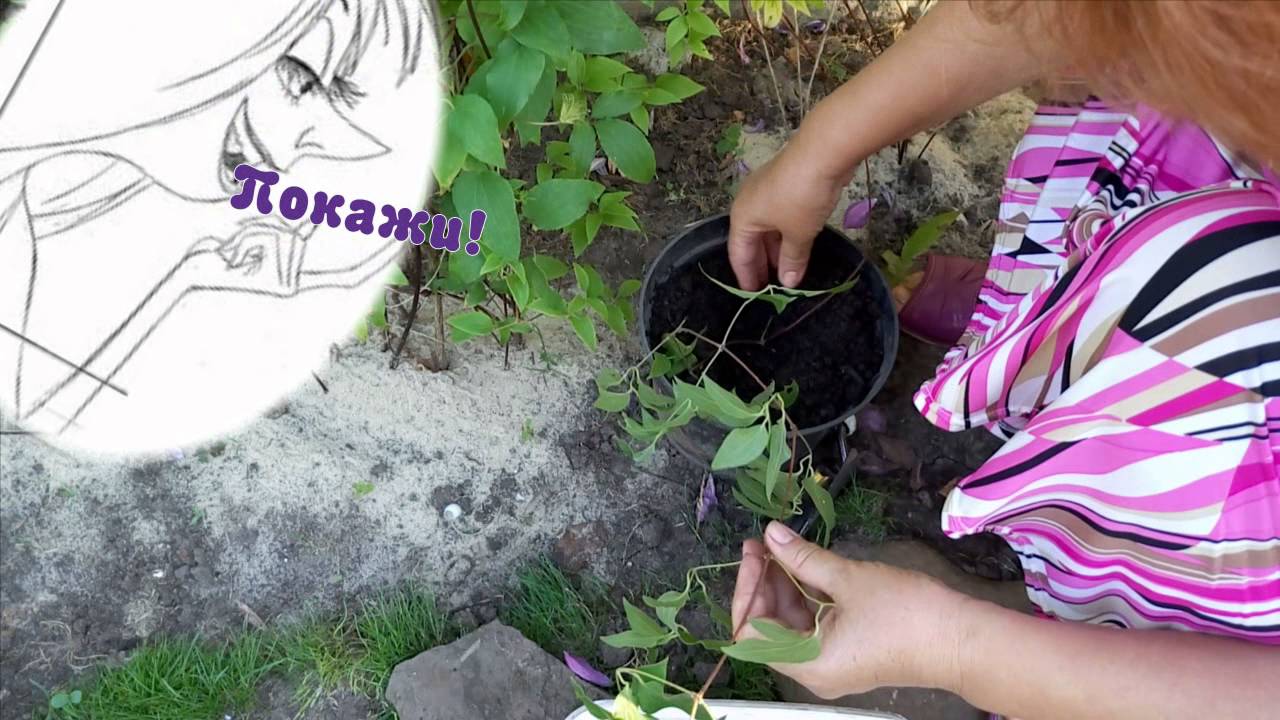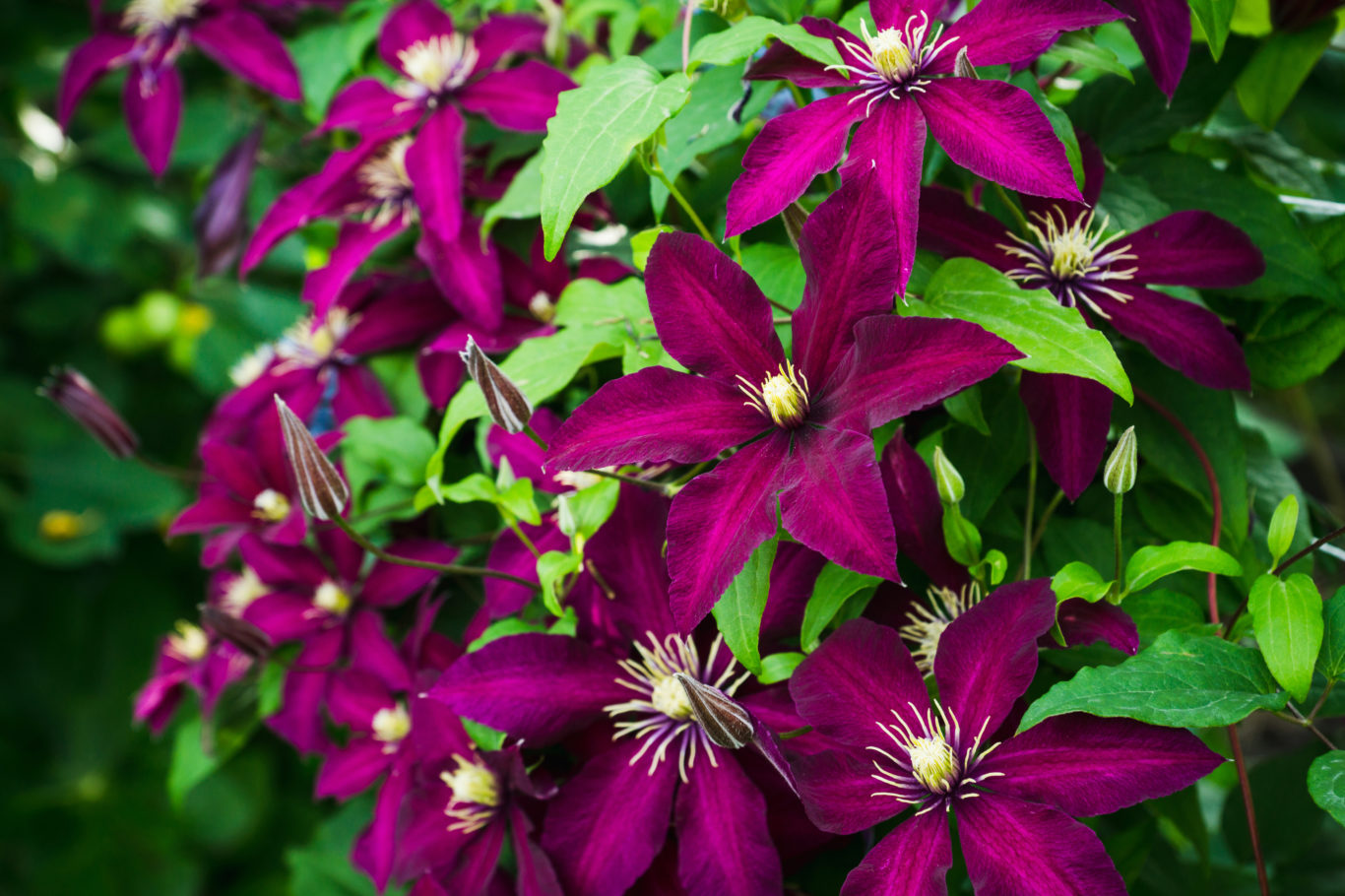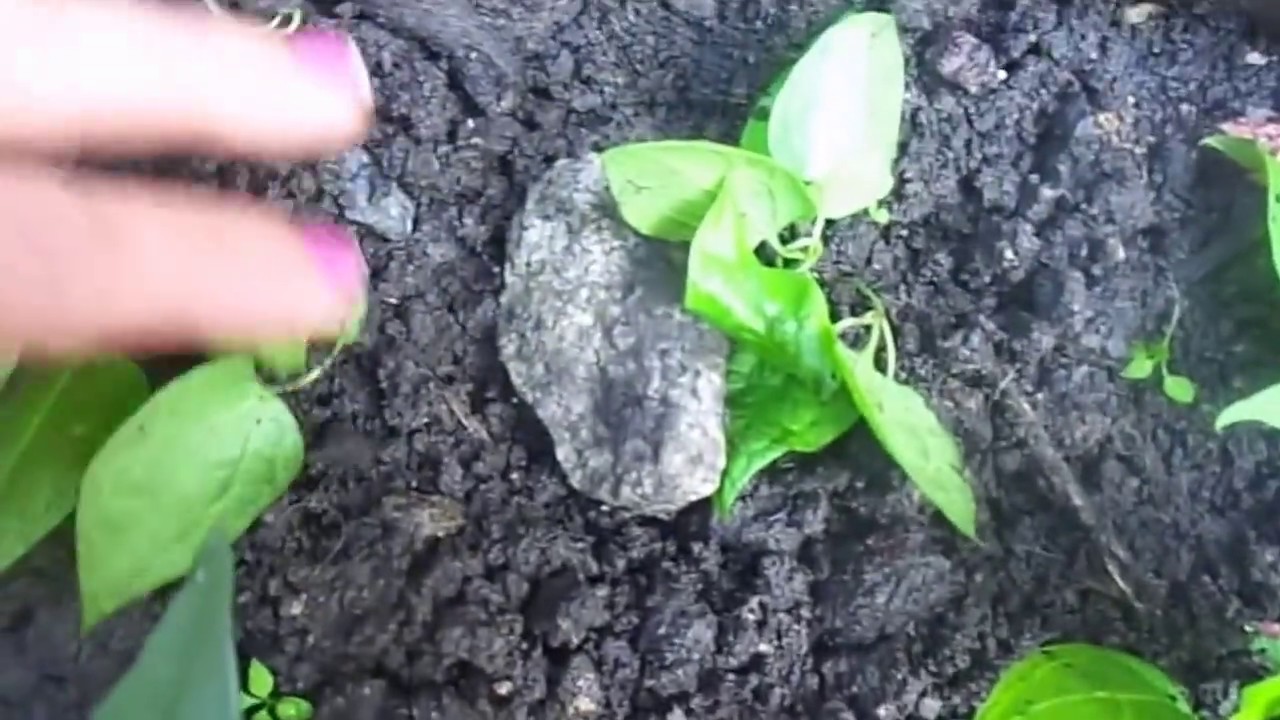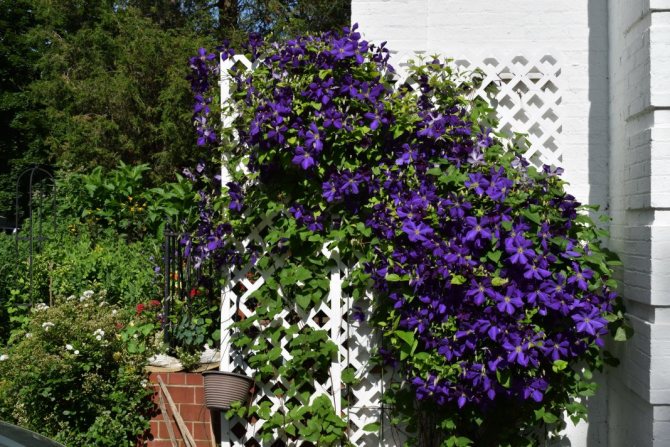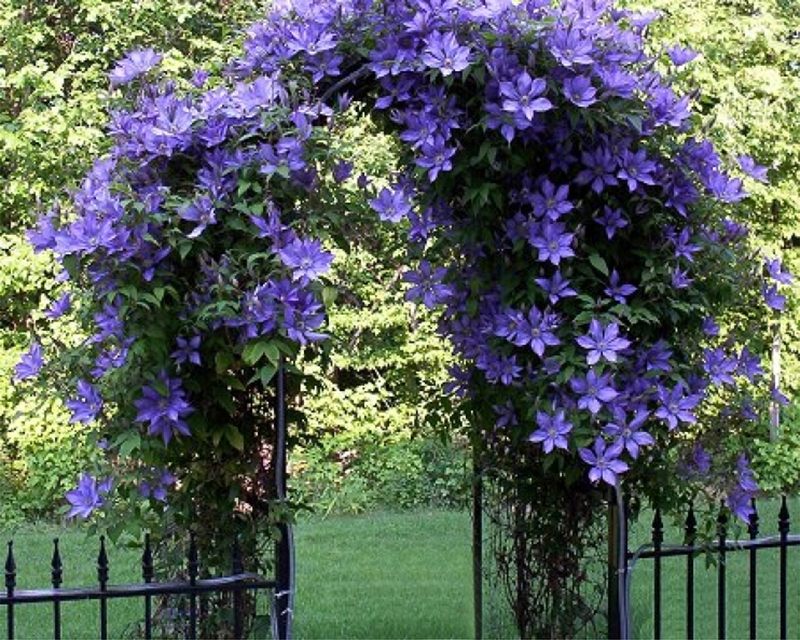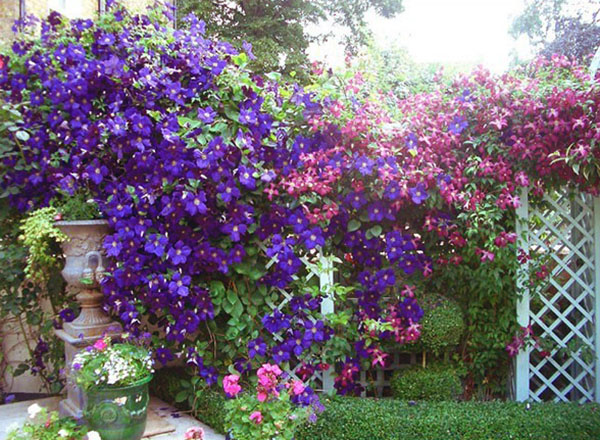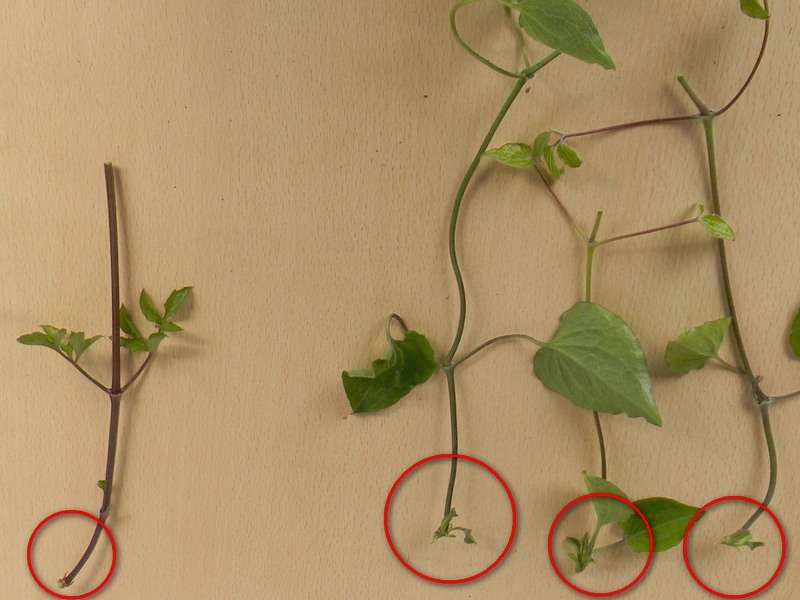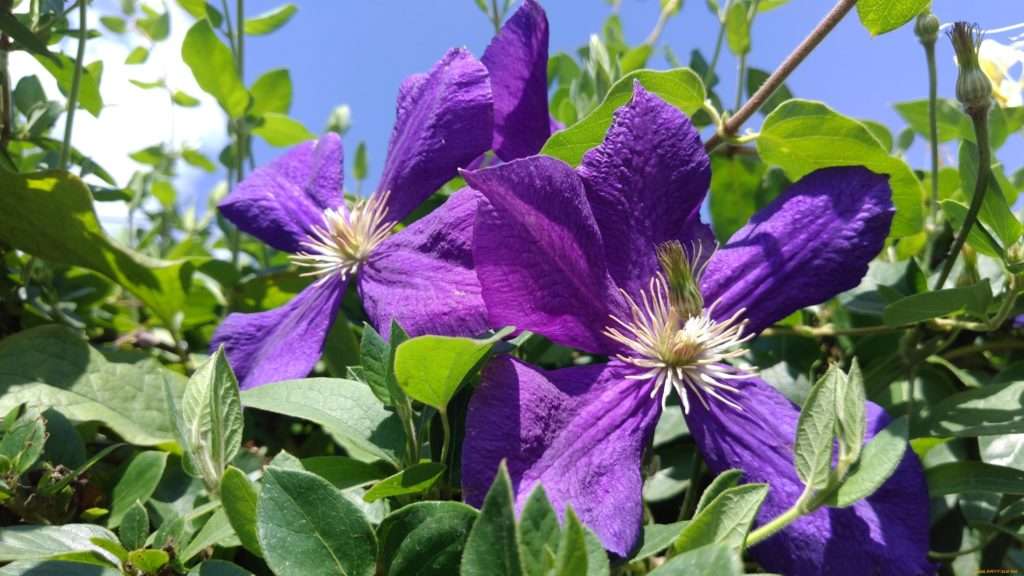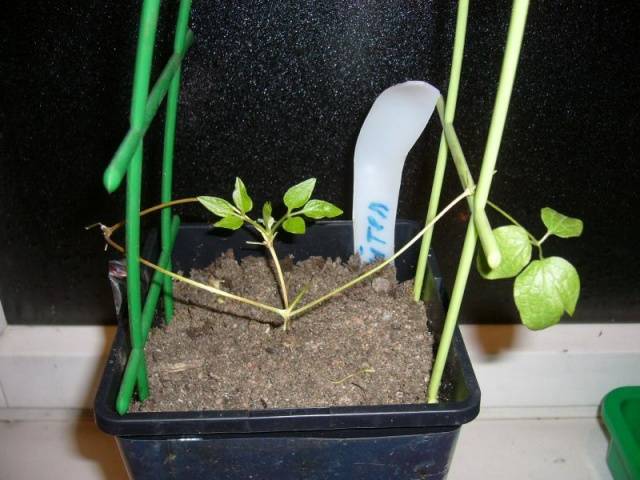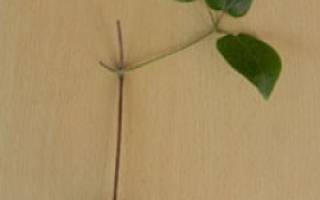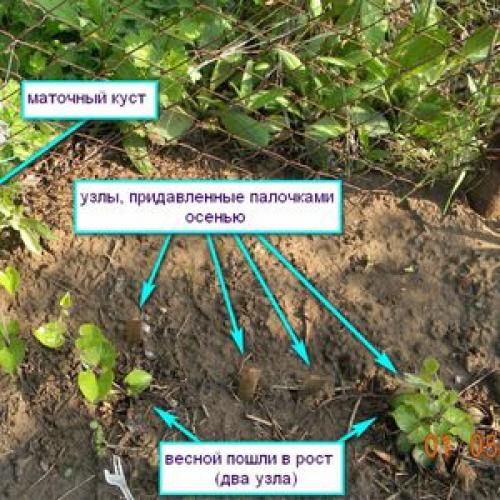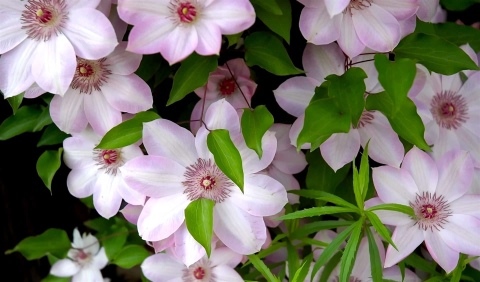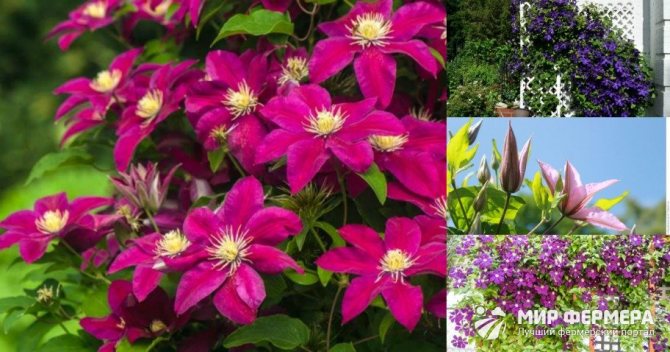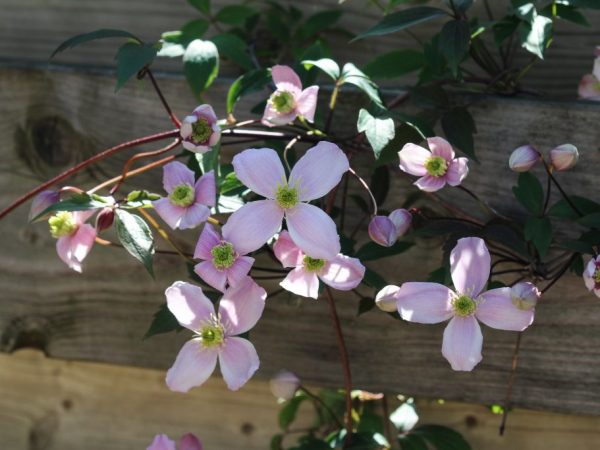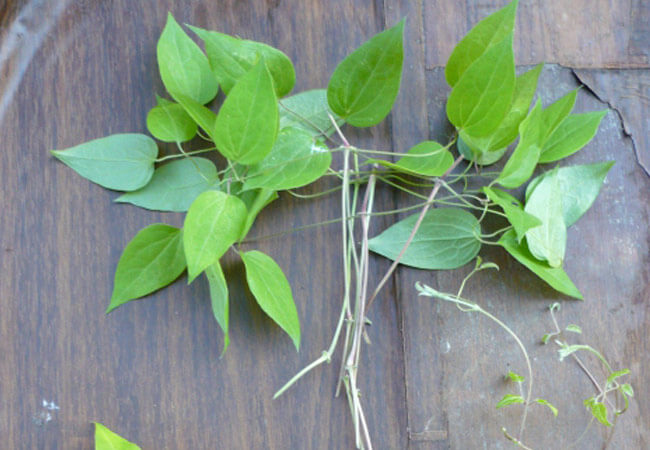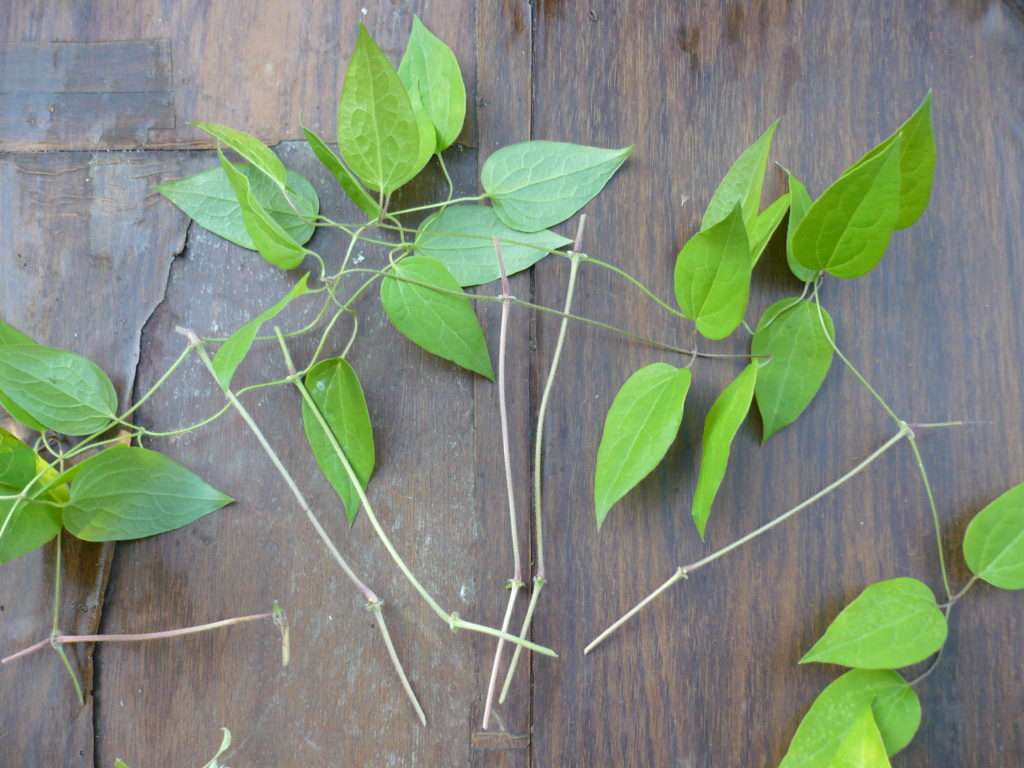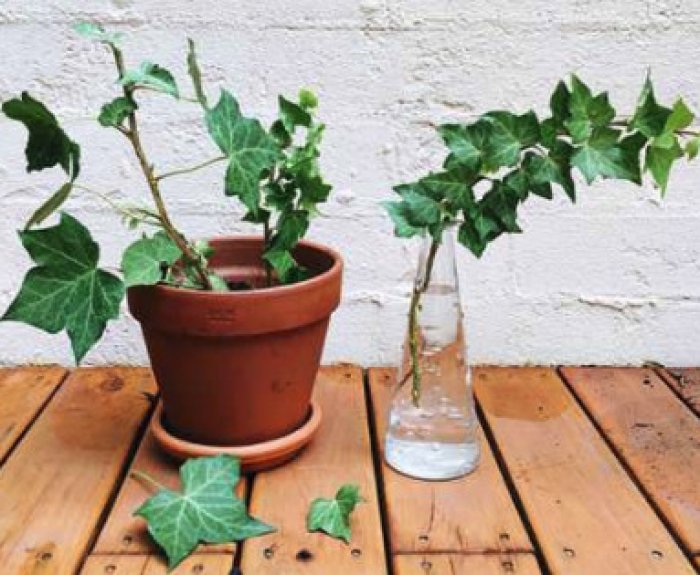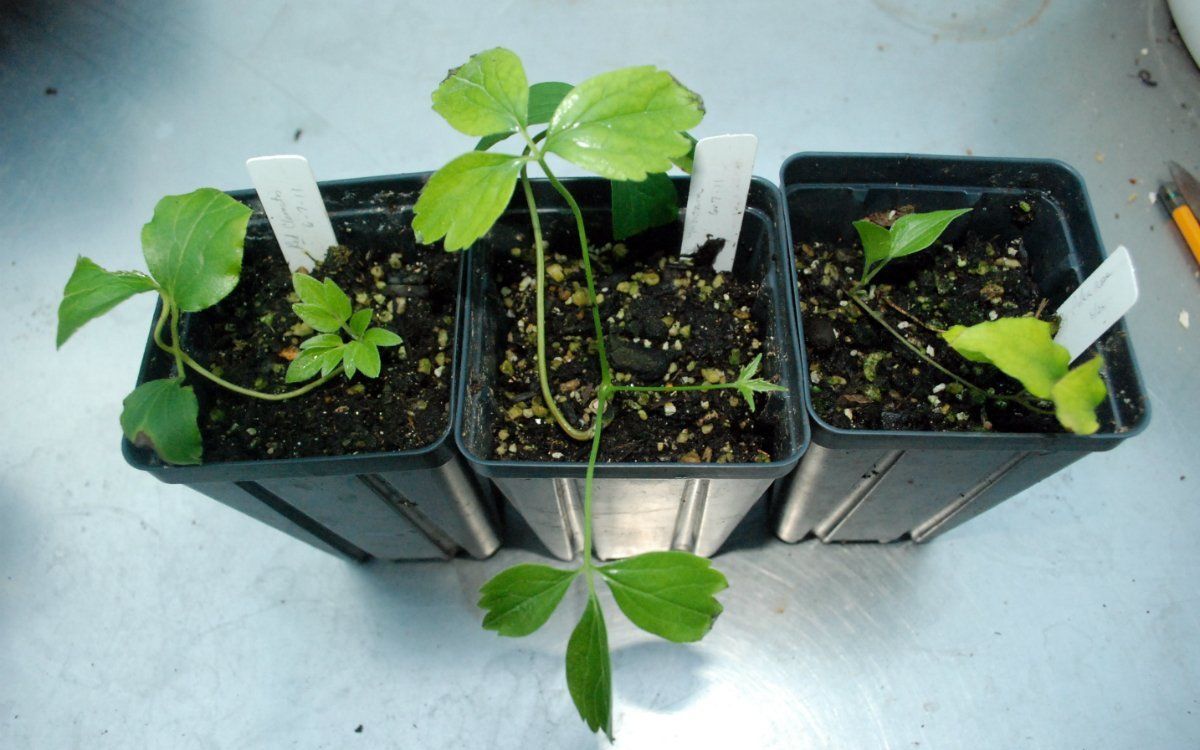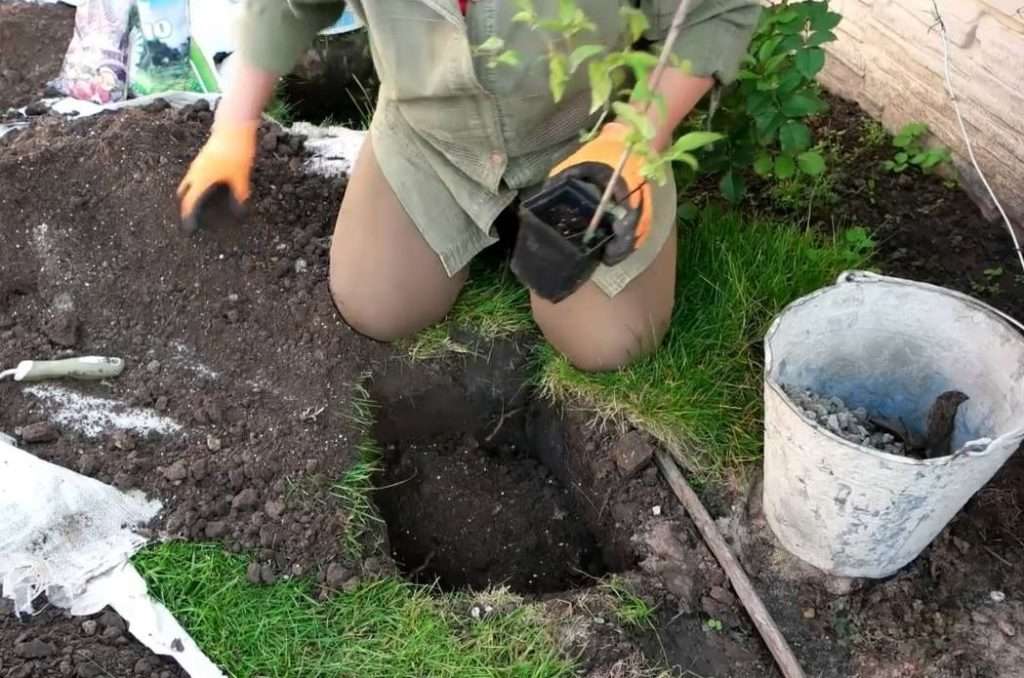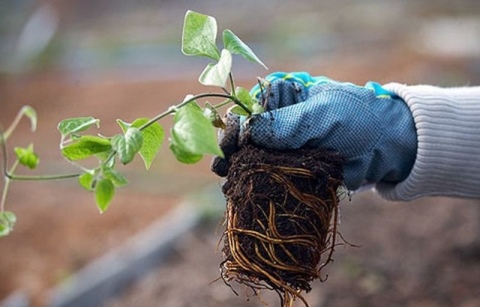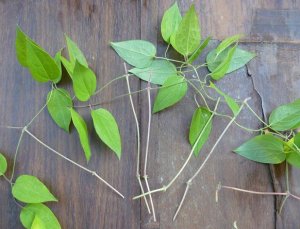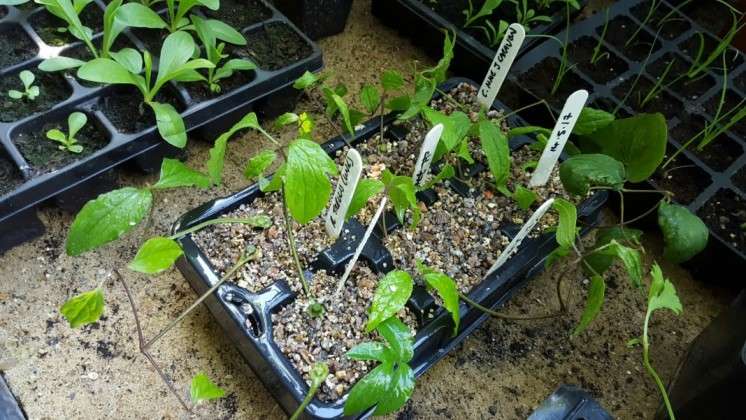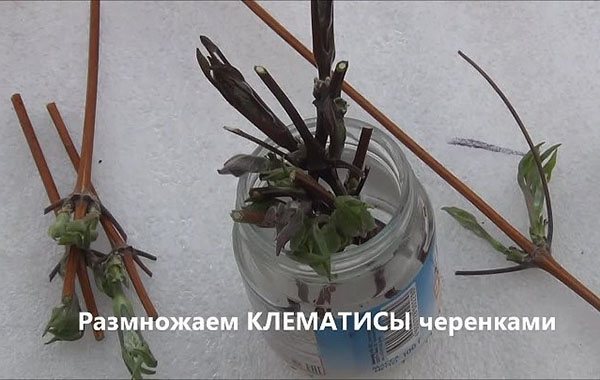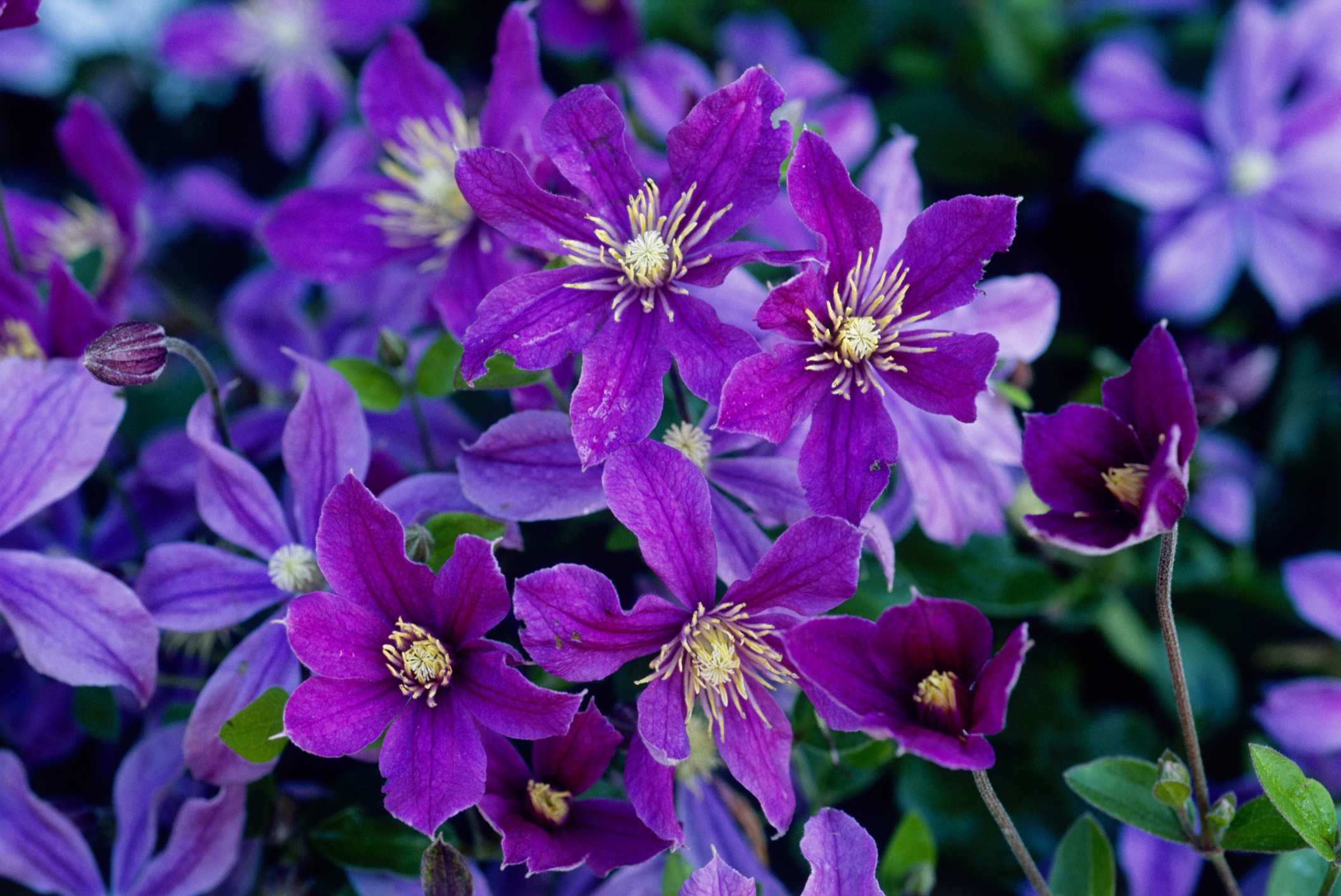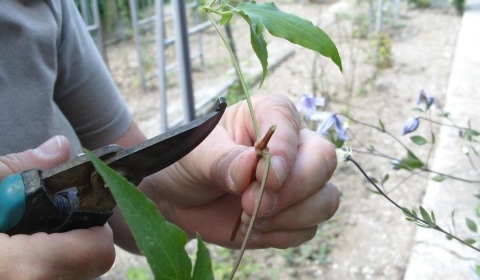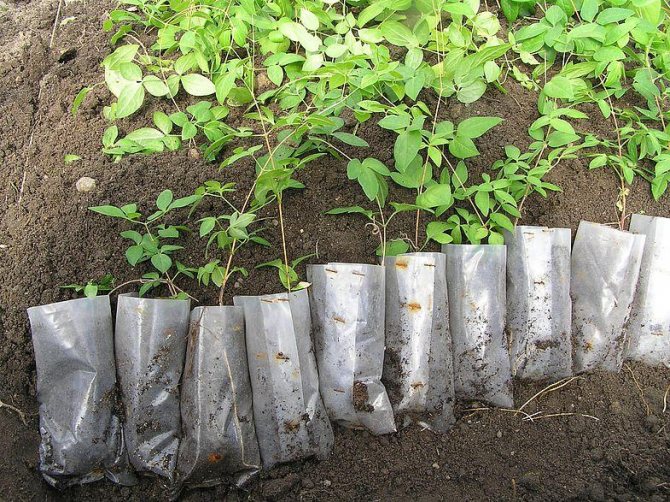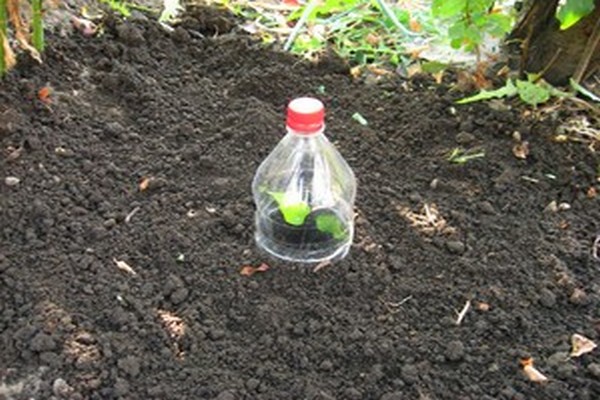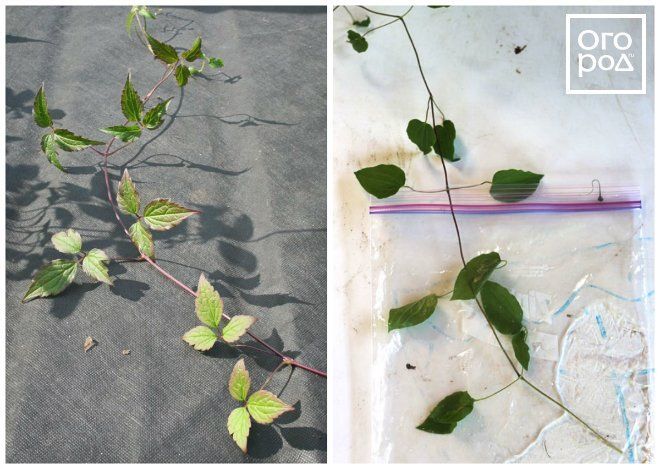Recommendations
To get a successful planting material from an adult clematis, it is worth adhering to a few tips regarding the features of propagation of a culture.
- Harvesting shoots for rooting should be carried out on a cool day, best of all in cloudy weather. The optimal time for cutting cuttings is evening. This option will help to avoid dehydration of the mother culture and shoots.
- Rooting in a greenhouse, in bottles or cups on windowsills will require diffused lighting. Fragile young plants should be protected from direct sunlight.
- The best covering material will be gauze, which retains moisture well, and at the same time allows air to pass through. An alternative to it would be any lightweight fabric in white. You can also use glass, it must first be covered with a thin layer of white paint.
- For better rooting and survival, woody shoots should be split into two parts before planting. In this form, the planting material will take root many times faster.
You can get acquainted with the features of the reproduction of clematis by cuttings in the following video.
3 ways of breeding
There are several ways how clematis propagates: by seeds, layering, dividing the bush and cuttings. Each of these methods has advantages and disadvantages. Therefore, in order to choose the most optimal option, it is worthwhile to study each of them in detail.
Seed propagation
Reproduction of clematis by seeds is a simple procedure.
Important! The method of propagation by seeds of clematis is possible only for wild and small-flowered species
How to propagate by seed
The planting material is necessarily stratified. To do this, the seeds must be soaked in water for several days. Then they are covered with wet sand and put into the refrigerator. They are kept there for two months. The seeds can then be planted outdoors at the end of April.
It is also possible to plant seeds outdoors in the fall. During the winter, the planting material will be naturally hardened. Springs will sprout in the spring. After they grow up a little, they can be transplanted to a permanent place.
Reproduction of clematis by seeds is possible at home. Seeds must be sown in containers with soil, then covered with foil and placed in a warm and bright place. The soil is moistened with a spray bottle. When the first shoots appear, you need to remove the film. After the first leaves grow, they must be dived and planted.
Note! Seedlings can be planted in open ground only after a year. The bushes will begin to bloom only after 3-4 years, since during this time they will increase the green mass
In the future, proper care for vines consists in regular watering and combating weeds.
Reproduction by layering
It takes much longer to grow a vine by layering than other methods.
How to propagate by layering
For this, horizontal shoots are used. How clematis reproduce by layering:
- Dig a groove near the bush. Its depth should be 10 cm. The shoot is placed in it. All actions must be done very carefully, since the branches are very fragile.
- Fertile soil is sprinkled on top and compacted.
- The shoot is attached in several places with a wire.
- Watering is necessary in a timely manner. The earth should not be allowed to dry out.
- Also, the plant must be mulched, covered with leaves and needles for the winter.
In spring, young shoots will begin to hatch. They need to be huddled up once over the summer.
For your information! After a year, the shoots will become strong and can be divided and planted in a permanent place.
Dividing the bush
Reproduction by dividing the bush is possible when the plant is no more than seven years old. Over time, the vine begins to grow very powerful and strong roots. Before this period, it is dangerous to propagate the plant by dividing the bush, since there is a high probability of damaging the root system.
Important! Dividing the bush will make the bush look younger. Separation is possible both in spring and autumn.
In the first case, this is carried out until the kidneys begin to swell; in the second, the time is not limited. Before digging up an adult bush, the aboveground part is cut off. It is necessary to leave 2-3 kidneys. Next, the bush is dug up along with the ground. This is done carefully so as not to damage the roots.
Separation can be done both in spring and autumn. In the first case, this is carried out until the kidneys begin to swell; in the second, the time is not limited. Before digging up an adult bush, the aboveground part is cut off. It is necessary to leave 2-3 kidneys. Next, the bush is dug up along with the ground. This is done carefully so as not to damage the roots.
Next, the roots are divided using a knife. A knife is passed through the central part of the bush, dividing it into independent divisions. Planting must be carried out in pits with fertile soil, deepening the plant by 10-12 cm.
It is much more difficult to dig up an elderly vine. In this situation, a tunnel is made from the side. The exposed root is washed with water. Then you need to cut out a part of the root with a shovel and divide it into several seedlings. During planting, small bushes are shortened to two buds.
How to propagate by dividing a bush
Breeding methods for clematis
Green cuttings
In order to grow a complete, healthy plant, it is important not to skip the start of cutting the cuttings. For the southern regions, this is the time period from May to June, the northern regions and the Middle Lane - June, the first decade of July
The readiness for grafting is checked as follows: the shoot, bent by the hand, does not break. The second sign is the tying of buds on clematis (the appearance of single inflorescences).
It is equally important to prepare an earthen substrate for future clematis seedlings. It is usually mixed from river sand, peat and black soil.
The reaction is slightly acidic.
The stalk is planted in a special way: one internode is sprinkled with earth, the other is left on the surface. The seedling needs regular, but not over-watering. After reaching 10 cm in height, the shoots are pinched to stimulate the growth of the root system. After about a year, the strengthened clematis are planted in open ground.
Layers
This method is simple but effective enough. It is used in the fall. The grown shoots of clematis are buried in, and over time they sprout fresh shoots, become independent plants. In the spring, the layering will sprout, strengthen, and in the fall they can be separated from the mother trunk of clematis, planted in a new place.
Dividing the bush
To apply this method, you will need to dig out the entire clematis bush entirely. Usually, this procedure is done when the plant reaches the age of seven. They act carefully so as not to damage the roots of the bush. The plant is washed under running water until the earthen lump is washed off.
Next, with a sharp tool (knife or shovel), divide the bush into the desired number of parts so that the roots and buds are preserved. It is believed that the division can be carried out without restrictions on the time of year - in spring, autumn or summer.
Seeds
The containers are filled with a mixture of earth and sand. Leave the planted seeds in a greenhouse or greenhouse (the temperature should be at least 30 degrees). The seedlings are regularly watered, when 2 leaves appear, a pick is made.
The choice of a method for growing clematis depends on the goals and objectives of the grower, his capabilities. The most difficult way is seed breeding.If clematis is already growing on the site, then you can practice breeding by layering, cuttings or dividing the bush. The specific decision is also associated with the age of the vine. Division is usually carried out for seven-year-old plants.
We looked at several ways to propagate this ornamental shrub. You can get it clematis from seed by the process of cuttings, dividing the bush or layering. The simplest and most reliable is reproduction by layering and dividing the bush. In second place, you can put the cuttings of a shrub, but getting a plant from seeds is a rather troublesome business.
How to root clematis from a cutting
The easiest way is to use a sharp knife and cutting board to cut the cuttings. This procedure is performed according to the following scheme:
- The shoot is laid on the board.
- With a sharp knife, cuts are made 1 cm above and 5 cm below the internode.
- Of the two leaves growing from the internode, one must be left, the second can be cut off.
In this way, several cuttings can be obtained from one shoot.
Rooting clematis cuttings in water
You can root the clematis stalk in plain water. To do this, it is placed in a container with water so that only the lower part is immersed. To reduce moisture evaporation, the sheet plate is cut in half.
It is very important that the water level is constantly at the same value; this must be monitored and refilled regularly. One jar can contain several cuttings at the same time
The light in the room in which the jars with cuttings are located must be dimmed. In 1.5-2 months, the length of the roots will reach 4-5 cm. After that, the cuttings must be transplanted into soil, containers or a greenhouse. Keeping them further in the water is strongly discouraged, as this can lead to their death.
Rooting in the ground
For planting cuttings, it is better to use special containers that can be closed on top with transparent material. They are filled with soil mixture or nutrient soil purchased from the store.
For disinfection, the soil can be scalded with hot water or sprayed with a solution of potassium permanganate diluted to a dark pink color.
The harvested cuttings are treated with a root growth stimulant, keeping the cuttings in it for 10-12 hours, and then planted in the ground to a depth of about 0.5 cm.The interval between adjacent cuttings should be at least 5 cm.After planting is completed, the plants and the soil are moistened, then the container is closed with a plastic bag or film.
The necessary conditions for the normal survival of clematis are as follows:
- Air temperature + 18-20 ° С.
- Air humidity 90%.
- Soil moisture 30%.
Excessive humidity, like high temperatures, can lead to the death of cuttings.
Further care
For good rooting by cuttings, appropriate conditions are needed. They need to be watered regularly, as well as to ensure the ambient temperature is within + 20-22 ° С. Containers with cuttings must be regularly ventilated; for this, the plastic wrap is temporarily removed.
After 1-2 months, the cuttings will have their own root system. At this time, they are seated in separate containers and placed for growing. In the fall, young clematis are removed to the cellar, and in the spring they are planted in a permanent place.


